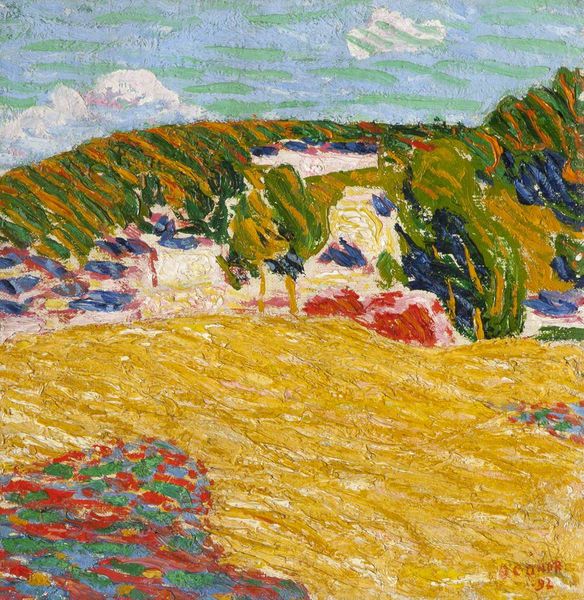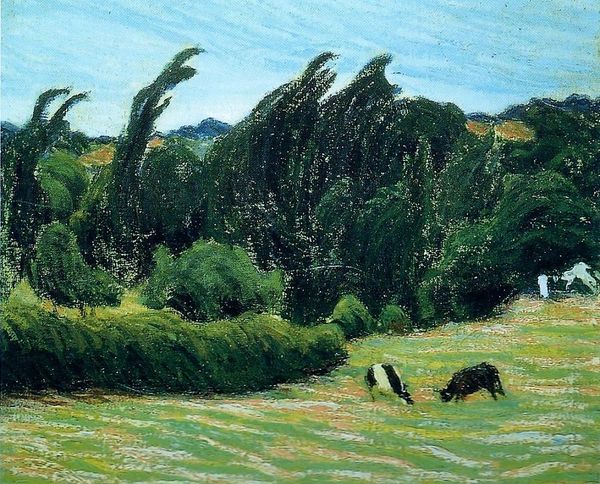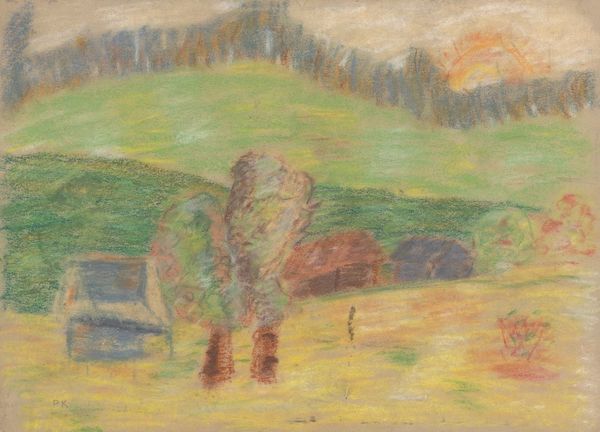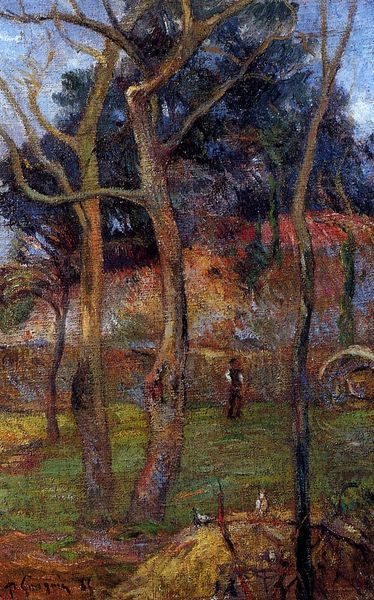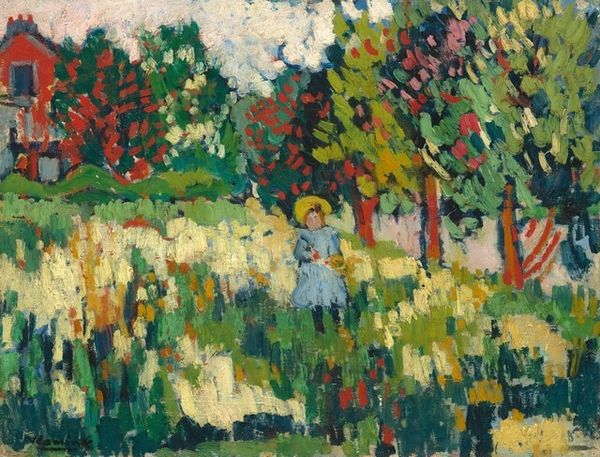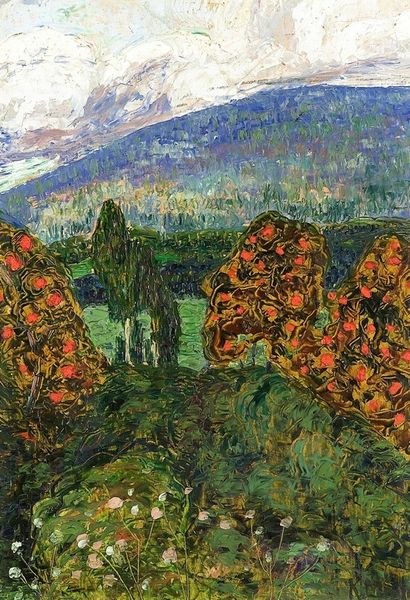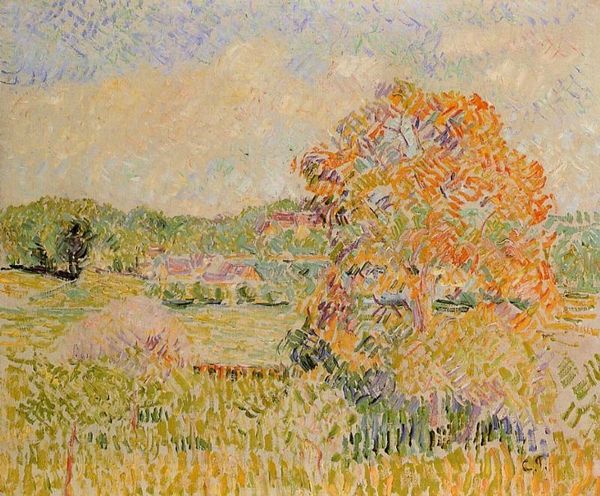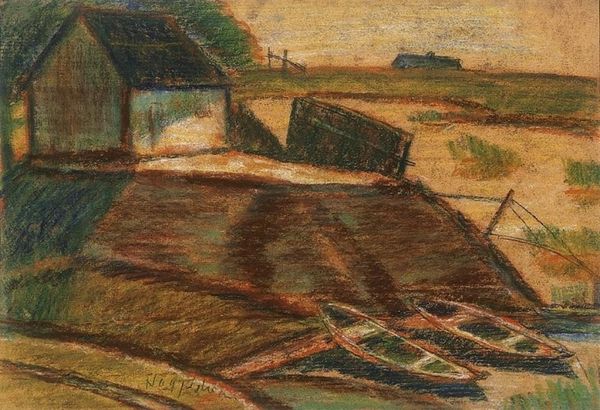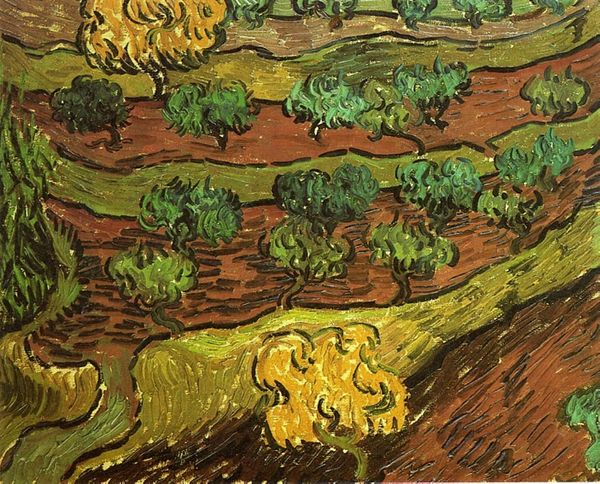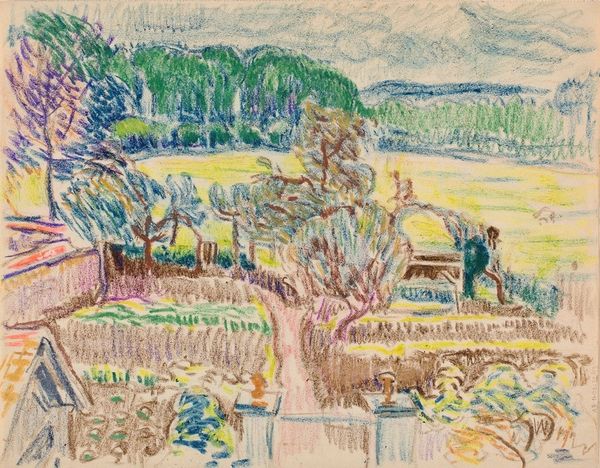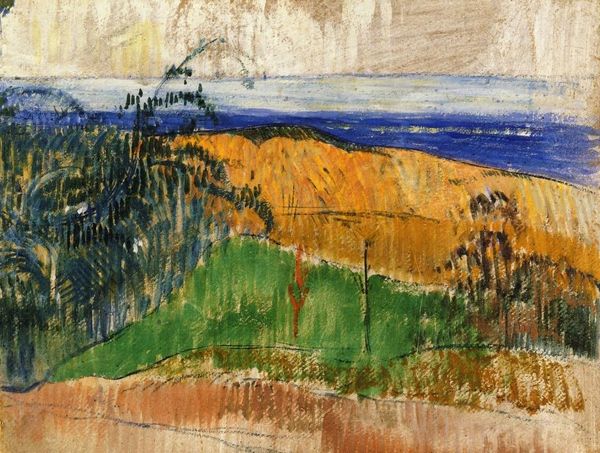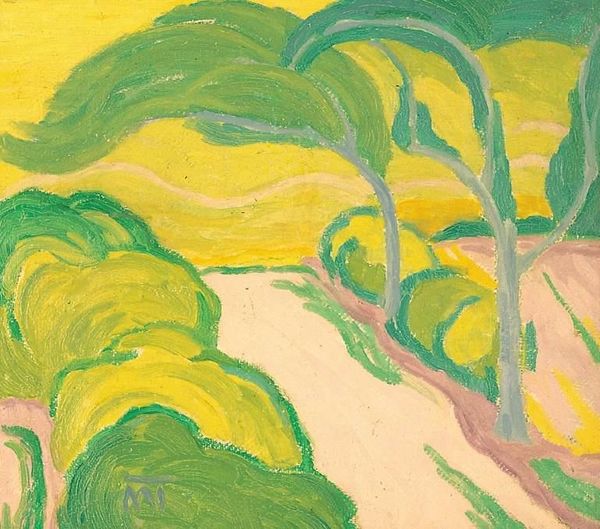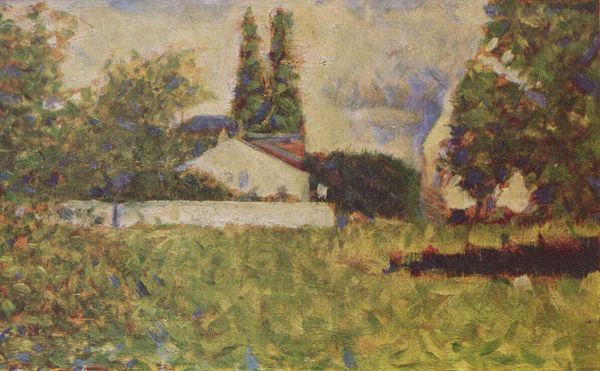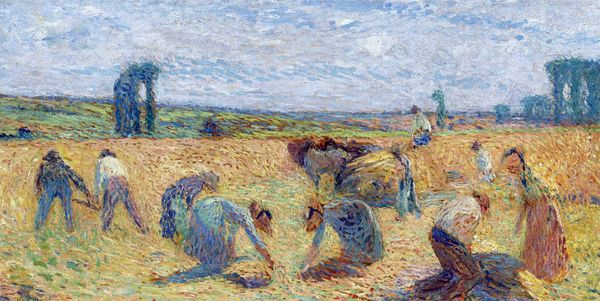
Dimensions: 67.6 x 91.8 cm
Copyright: Public domain
Curator: So striking—what’s your first reaction to the painting? Editor: Overwhelming. There’s a density to it, almost suffocating. The colors are vibrant, but the composition feels claustrophobic. Curator: "Yellow Landscape", by Roderic O'Conor. Painted in 1892, this oil on canvas exemplifies O'Conor's engagement with Post-Impressionism and his plein-air explorations, aligning with a broader movement away from academic traditions. It currently resides at Tate Britain. Editor: "Plein-air," interesting. That adds a layer of irony considering that feeling of confinement. It makes me consider the ways artists, historically, frame and mediate nature. Is it really about direct engagement, or more about a projection of an idea *of* nature? Curator: That tension is palpable. The brushstrokes, the use of pure color—O’Conor was wrestling with similar questions to other artists in the Pont-Aven School, grappling with modernity and representing subjective experience. We see that shared exploration across various artistic circles. Editor: Definitely. I can see how he breaks down the landscape into these segmented strokes, each color working almost independently, but then coming together to give an emotional weight to the whole picture. Almost a symbolic interpretation, pushing against mere replication. How does the social context of the time relate to such a highly abstracted visual expression? Curator: In that era, artistic experimentation was often tied to a questioning of social norms. A shift towards the personal, and interior life in contrast to public ideals can often signal political and social change, like growing anarchist ideals among artistic circles in Paris and rural Brittany. Artists questioned institutions and sought freedom, and sometimes looked at their local landscapes anew through this questioning. Editor: So we have this idea of landscape, but also landscape painting tradition turned inward. The painting becomes this commentary of that history, doesn’t it? This particular image really encourages conversations about perception, mediation, and the politics embedded within representation itself. Curator: Absolutely. It's a fascinating piece because of its position within multiple movements and histories, all visualized through intensely subjective experience. Editor: Seeing it in that light makes the 'overwhelming' aspect make sense—it’s O’Conor expressing a sort of intense processing of external and internal experience, almost like it's becoming something else entirely in the landscape's representation. Curator: It definitely provides food for thought on the continuing role of landscapes, artistically or culturally.
Comments
No comments
Be the first to comment and join the conversation on the ultimate creative platform.
